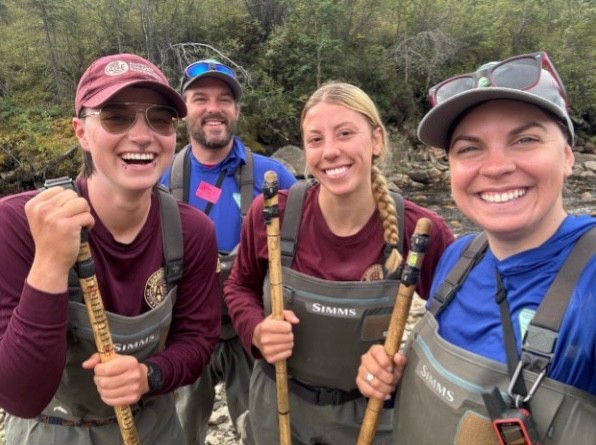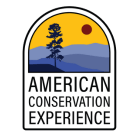An interview with EPIC BLM member Mo Ouren who Served with the Bureau of Land Management Eastern Interior Field Office in Fairbanks, Alaska
1) Describe your role, background, and work location.
I worked as a Stream Restoration Implementation and Effectiveness Monitoring Member with the Bureau of Land Management Eastern Interior Field Office in Fairbanks, Alaska. I spent most of my time on a crew, composed of BLM staff and me and another ACE intern, collecting lotic AIM data. Lotic AIM is a BLM framework for collecting data on wadeable streams and rivers. Most of our work took place on Nome Creek which is a tributary to the Wild and Scenic River called Beaver Creek, and an hour and a half north of Fairbanks off of the Steese Highway. Nome Creek was historically placer mined many times over the twentieth century and was dredged by a huge floating dredge. Consequently, the stream, as well as its fish habitat and water quality became degraded. The stream had some reclamation work done on it in the early 2000s. The BLM took over the land, and last year began a huge restoration project to correct some of the failures of the first reclamation attempt, as well as add pools for fish habitat. We spent the summer living next to all the heavy equipment operators who were implementing the natural channel design. Our job was to take the before treatment stream data so they can later see the effectiveness of the treatment, as well as adding to the consensus as to the health of streams in Alaska. I also got to help out on a Low Tech Process Based Restoration (LTPBR) project on the stream, and take snorkel surveys of the fish living in the constructed pools. It was amazing to see this stream, which had been so heavily degraded for so many years, providing great fish habitat after the structures were constructed. There is nothing as amazing as seeing the positive effects of restoration you were a part of.

The Lotic AIM Crew
2) What were your goals coming into this position, and how has this position helped shape your future goals, have they changed since?
Before this job, I had worked over a year and a half in restoration through conservation corps and non-profits. The summer before, I had worked on a stream restoration crew in Vermont with Trout Unlimited where we used LTPBR techniques to create fish habitat and generally improve stream health. I loved this work, and after spending my winter and spring on a fire crew, I knew I wanted to be in the water for my summer. Part of the job description for this position was assisting with LTPBR work. I wanted to learn how to apply these techniques in streams with very different geomorphology, substrate sizes, surrounding vegetation, and stream power. I wanted to be a part of this huge restoration project that is so different from the small scale and lower tech work I have done in the past. I learned a lot about how to take sampling data. This job helped narrow down what parts of stream work I want to pursue in the future. I am not studying to be a forest hydrologist and using what I have learned about restoration to guide my education.
3) What is something you think you’ll reflect on long after finishing your term in this position?
I will always remember the many beautiful places and awesome people this job connected me with. Alaska is a magical place and I am planning on going back and staying longer.
4) What advice would you have for those who would like to move to a similar role as you have now? What have you learned about the conservation community through your role?
I have learned that the adventure is worth it. I was working in North Carolina before I took this job in Alaska, so it made quite the exciting drive to get there. I am so glad I did, it pushed me and made me a more prepared person.
5) Share a book or music/podcast rec for long work days or remote work locations!
A book (as an audiobook) that got me through long drives and remote places was the sci-fi utopian novel The Dispossessed by Ursula K Le Guin.


